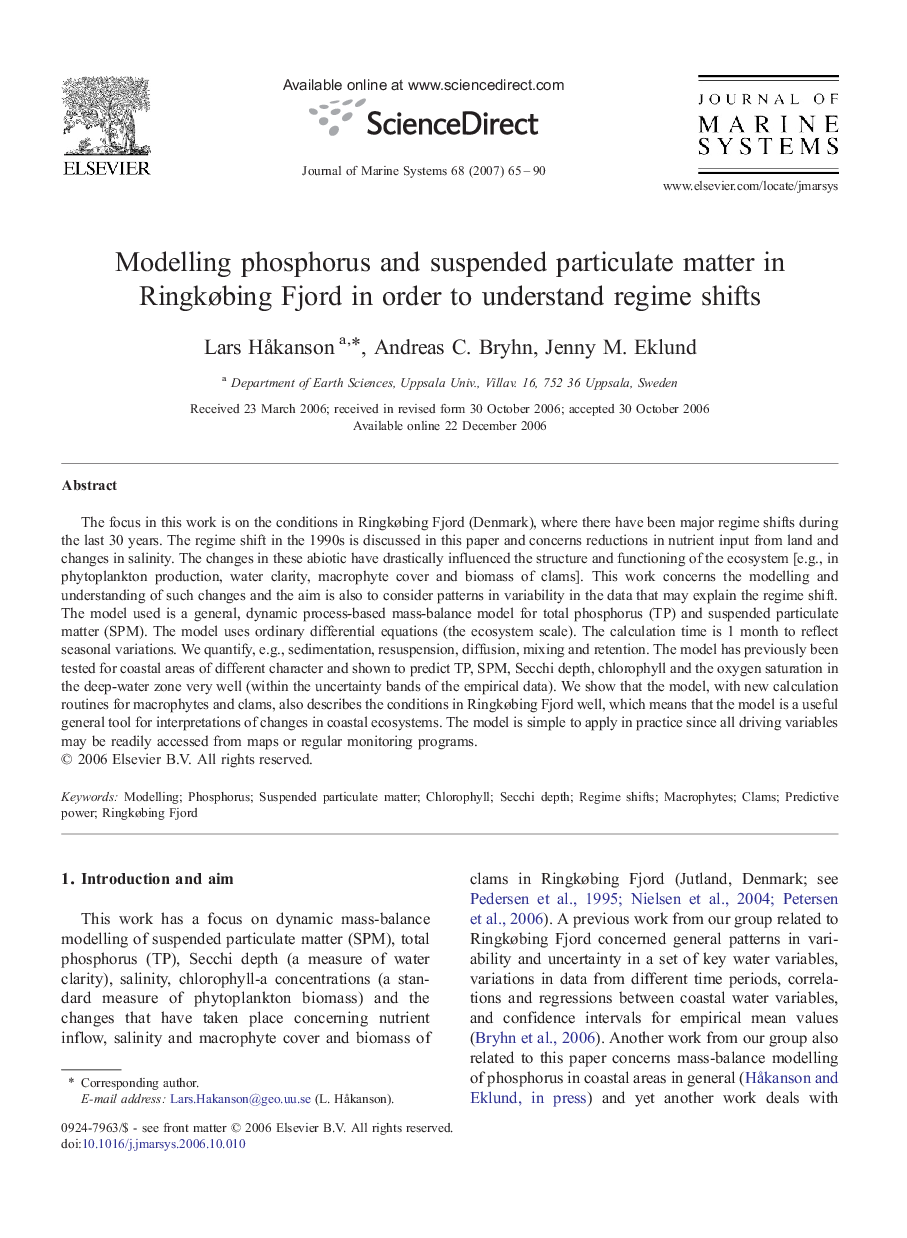| Article ID | Journal | Published Year | Pages | File Type |
|---|---|---|---|---|
| 4549256 | Journal of Marine Systems | 2007 | 26 Pages |
The focus in this work is on the conditions in Ringkøbing Fjord (Denmark), where there have been major regime shifts during the last 30 years. The regime shift in the 1990s is discussed in this paper and concerns reductions in nutrient input from land and changes in salinity. The changes in these abiotic have drastically influenced the structure and functioning of the ecosystem [e.g., in phytoplankton production, water clarity, macrophyte cover and biomass of clams]. This work concerns the modelling and understanding of such changes and the aim is also to consider patterns in variability in the data that may explain the regime shift. The model used is a general, dynamic process-based mass-balance model for total phosphorus (TP) and suspended particulate matter (SPM). The model uses ordinary differential equations (the ecosystem scale). The calculation time is 1 month to reflect seasonal variations. We quantify, e.g., sedimentation, resuspension, diffusion, mixing and retention. The model has previously been tested for coastal areas of different character and shown to predict TP, SPM, Secchi depth, chlorophyll and the oxygen saturation in the deep-water zone very well (within the uncertainty bands of the empirical data). We show that the model, with new calculation routines for macrophytes and clams, also describes the conditions in Ringkøbing Fjord well, which means that the model is a useful general tool for interpretations of changes in coastal ecosystems. The model is simple to apply in practice since all driving variables may be readily accessed from maps or regular monitoring programs.
